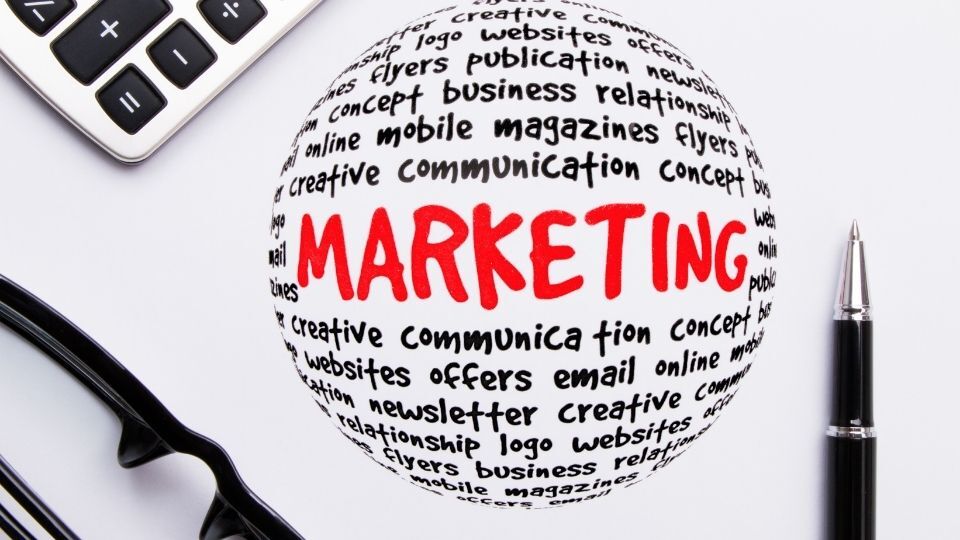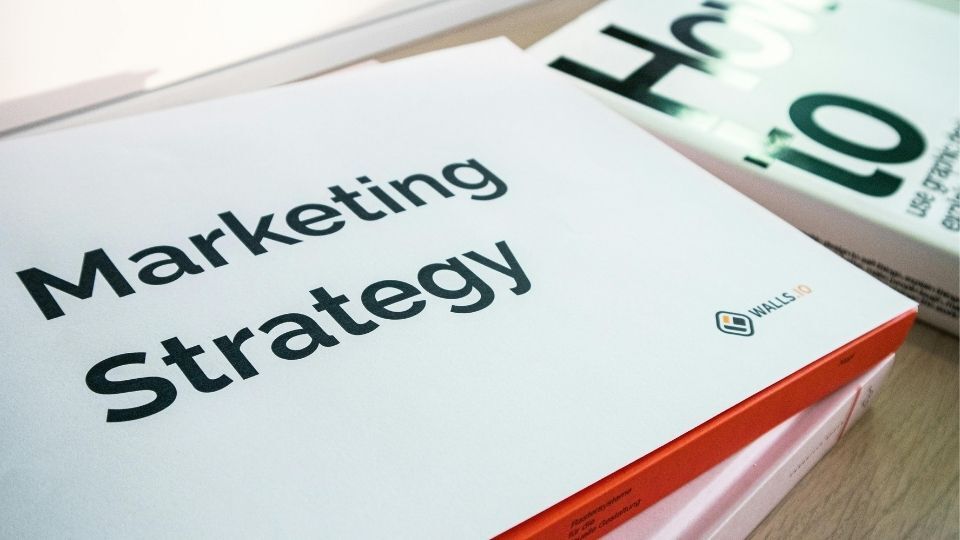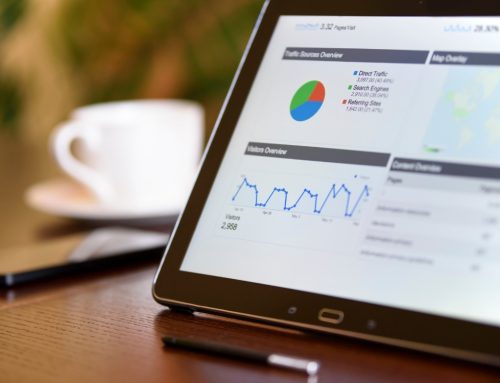The digital marketing landscape is vast, with businesses competing fiercely to grab consumer attention. Traditional advertising TV, print, or billboards offers reach, but its biggest weakness lies in measurability. Marketers can’t always track whether the money spent correlates directly with sales, leads, or engagement.
Enter performance marketing strategy a modern, ROI-driven approach where businesses only pay for actual, measurable outcomes. Whether that’s a click, a lead form submission, a sale, or even an app download, performance marketing flips the old model on its head by ensuring accountability.
At its core, a performance marketing strategy aligns marketing spend directly with business goals. Instead of “hoping” an ad works, you know exactly what each pound delivers in terms of return.
What is Performance Marketing Strategy?
A performance marketing strategy is a data-driven content marketing approach where advertisers only pay when a predefined action occurs. Unlike traditional advertising models that charge based on exposure (such as impressions or airtime), performance marketing ensures that every penny spent is tied to a measurable outcome.
Defining the Concept
At its simplest, performance marketing refers to results-based advertising. Businesses collaborate with publishers, platforms, or affiliates and compensate them when desired actions are achieved. These actions may include:
- Clicks on an advert (Cost Per Click – CPC)
- Impressions or views (Cost Per Mille – CPM)
- Lead form completions (Cost Per Lead – CPL)
- Purchases or conversions (Cost Per Acquisition – CPA)
- App installs or downloads
The performance marketing strategy thus bridges business goals and advertising expenditure, creating a model where efficiency, accountability, and ROI measurement are built into every campaign.
Core Philosophy
The foundation of a performance marketing strategy lies in three key principles:
- Accountability – Every action can be tracked, measured, and attributed.
- Optimisation – Campaigns can be continually refined using analytics to achieve better results.
- Alignment – Marketing objectives are aligned with financial outcomes, reducing wasted spend.
In essence, a performance marketing strategy transforms advertising into a controllable investment rather than a gamble.
Why It Matters in Modern Digital Marketing
With the increasing availability of tracking tools, AI-driven analytics, and programmatic ad buying, businesses are no longer content with awareness-only campaigns. They want direct, measurable returns.
A strong performance marketing strategy allows businesses to:
- Target audiences precisely using data.
- Scale campaigns depending on ROI.
- Reduce risk by paying for results rather than potential.
It has become the backbone of most digital-first companies, from e-commerce giants to SaaS startups, because it ties marketing spend directly to revenue growth.
Types of Performance Marketing
A performance marketing strategy can be executed through several channels, each tailored to specific objectives such as brand visibility, lead generation, or sales growth. While the overarching principle remains the same—paying for measurable outcomes—the tactics differ. Below are the most prominent types of performance marketing.
1. Affiliate Marketing
Affiliate marketing is one of the oldest and most widely used performance-based models. In this setup, businesses partner with affiliates (publishers, bloggers, influencers, or media sites) who promote their products or services.
- How it works: Affiliates use unique tracking links to send traffic to a business’s website. The affiliate earns a commission when the referred visitor completes a desired action, such as a purchase or signup.
- Benefits: Cost control, broader reach, and access to niche audiences.
- Example: An online fashion retailer rewarding bloggers for every completed sale generated via their referral links.
Affiliate marketing fits seamlessly into a performance marketing strategy because it aligns spending with results, making it a low-risk channel.
2. Native Advertising
Native ads are paid placements designed to blend naturally with the content around them. Unlike display banners, they match the form and function of the platform where they appear.
- How it works: Brands pay when users interact with the ad, usually via clicks or engagements.
- Benefits: Higher user trust, better engagement rates, less intrusive experience.
- Example: Sponsored articles on news websites that educate readers while subtly promoting a brand.
This form of advertising adds credibility to a performance marketing strategy, especially for awareness-driven campaigns.
3. Display Advertising
Display ads include banners, pop-ups, and other visual formats placed across websites and apps.
- How it works: Marketers typically pay based on impressions (CPM) or clicks (CPC).
- Benefits: Wide reach, strong brand visibility, retargeting opportunities.
- Example: An e-commerce business retargeting visitors with banner ads featuring products they viewed earlier.
When integrated into a performance marketing strategy, display advertising works best with strong targeting and retargeting tactics.
4. Social Media Advertising
Social platforms like Facebook, Instagram, LinkedIn, and TikTok have become core channels for performance marketing.
- How it works: Advertisers pay for specific actions, such as clicks, video views, or conversions.
- Benefits: Precision targeting, scalable budgets, audience segmentation by interests, behaviour, and demographics.
- Example: A SaaS company using LinkedIn ads to drive whitepaper downloads from decision-makers.
Social ads are central to a performance marketing strategy, especially for brands seeking hyper-targeted campaigns with measurable ROI.
5. Search Engine Marketing (SEM)
Search advertising, particularly Google Ads, allows brands to place ads on search engine results pages (SERPs).
- How it works: Ads appear when users search relevant keywords. Businesses pay per click (PPC model).
- Benefits: High intent traffic, measurable outcomes, scalable results.
- Example: A local law firm bidding on keywords like “solicitor near me” and paying only when potential clients click through.
SEM is a cornerstone of any performance marketing strategy because it captures demand at the moment of intent.
6. Programmatic Advertising
Programmatic advertising uses automated technology and AI-driven bidding to purchase ad inventory in real time.
- How it works: Algorithms buy and place ads instantly based on audience data.
- Benefits: Efficiency, precision, reduced human error, cost-effectiveness.
- Example: A travel brand running programmatic ads to show flight offers to users browsing holiday blogs.
For enterprises, programmatic advertising scales a performance marketing strategy by optimising ad spend across multiple platforms.
7. Influencer Marketing (Performance-Based)
Influencer marketing has evolved into a measurable, performance-driven tactic where payment is linked to results rather than flat fees.
- How it works: Influencers promote products, but brands compensate them only for conversions, clicks, or leads.
- Benefits: Authentic audience engagement, higher trust, scalable partnerships.
- Example: A fitness brand paying influencers only for each subscription to their workout app generated via influencer links.
This model ensures influencer campaigns align with the broader performance marketing strategy instead of being pure awareness plays.
Benefits of Performance Marketing
A well-executed performance marketing strategy offers businesses far more than short-term gains. By tying spend directly to outcomes, companies unlock efficiency, transparency, and sustainable growth. Below are the key advantages that make performance marketing a cornerstone of modern digital strategies.
1. Measurable ROI
Perhaps the most significant benefit is the ability to measure every pound spent against outcomes. Unlike traditional advertising, where success is often intangible, performance marketing shows exactly what you’re paying for.
- Metrics such as clicks, conversions, leads, or revenue can be tracked in real-time.
- Businesses can calculate ROI instantly and justify marketing spend with precision.
This level of accountability ensures that every campaign decision aligns with financial objectives, making a performance marketing strategy inherently results-driven.
2. Cost Efficiency
Traditional campaigns often demand high upfront investment with uncertain results. A performance marketing strategy flips the model by allowing businesses to pay only for performance.
- Reduces wasted ad spend by focusing solely on completed actions.
- Enables businesses with smaller budgets to compete effectively.
- Provides flexibility in testing different creatives, channels, or audiences without heavy risk.
For start-ups and SMEs, this cost efficiency levels the playing field against larger competitors.
3. Scalability
Performance marketing is inherently scalable. Once a campaign demonstrates positive ROI, businesses can confidently increase budgets, expand targeting, or replicate successful tactics across new regions and platforms.
- Campaigns that deliver results can be scaled without guesswork.
- Growth can be achieved sustainably, ensuring resources are allocated to the most profitable channels.
This scalability makes a performance marketing strategy particularly valuable for e-commerce brands, SaaS providers, and global enterprises aiming for rapid expansion.
4. Reduced Risk
Because payments are tied directly to measurable outcomes, risk is significantly lower compared to traditional advertising models.
- Advertisers avoid paying for impressions or placements that fail to deliver engagement.
- Partnerships with affiliates and publishers are performance-driven, aligning incentives on both sides.
- Testing new markets or products becomes less risky, as costs are controlled by actions achieved.
Risk reduction is one of the strongest motivators for adopting a performance marketing strategy, especially for businesses managing tight budgets.
5. Data-Driven Optimisation
A performance marketing strategy thrives on data. Every click, lead, or conversion provides insight into consumer behaviour, audience segments, and content effectiveness.
- Real-time tracking tools allow for continuous campaign refinement.
- Businesses can adjust targeting, bidding, or creatives instantly.
- Predictive analytics and AI further enhance optimisation by identifying high-performing segments.
This creates a feedback loop where performance improves over time, maximising long-term ROI.
6. Flexibility Across Channels
Performance marketing is not limited to one channel. Businesses can test, mix, and optimise across search, social media, affiliate partnerships, programmatic advertising, and more.
- Multi-channel flexibility ensures no single platform dictates campaign success.
- Marketers can diversify risk and balance short-term sales with long-term brand growth.
- Strategies can be tailored for different objectives, from lead generation to direct sales.
This flexibility ensures a performance marketing strategy adapts to market changes, consumer trends, and technological advancements.
7. Alignment Between Advertisers and Publishers
A unique benefit of performance marketing is the alignment of goals between advertisers (brands) and publishers (affiliates, influencers, media outlets).
- Both parties are invested in driving results.
- Publishers are incentivised to deliver quality traffic, as their earnings depend on performance.
- Brands gain trustworthy partnerships that prioritise outcomes over volume.
This creates a win-win ecosystem where everyone benefits from measurable success.
Examples of Performance Marketing
A performance marketing strategy is not limited to theory—it’s actively shaping how global brands and SMEs reach, engage, and convert their audiences. Below are practical examples that demonstrate how performance marketing is applied in different industries.
1. E-commerce: Amazon Associates
Amazon’s affiliate programme, Amazon Associates, is one of the most successful performance marketing initiatives globally.
- How it works: Publishers promote Amazon products via affiliate links. They earn a commission for every sale generated.
- Why it works: With millions of products, affiliates have endless content opportunities. Amazon benefits by paying only for completed sales.
- Performance strategy fit: A scalable model where Amazon pays only for tangible conversions, aligning perfectly with the performance marketing strategy approach.
2. SaaS: HubSpot’s Paid Advertising Campaigns
HubSpot, a leading SaaS provider, leverages search engine marketing (SEM) and social media ads as part of its performance-driven funnel.
- How it works: Targeted PPC campaigns drive traffic to free trial or demo sign-up landing pages.
- Why it works: High-intent users searching for CRM or marketing automation tools are more likely to convert.
- Performance strategy fit: HubSpot pays only for clicks and optimises bids to maximise lead acquisition efficiency.
3. Retail: Nike Influencer Partnerships
Nike blends influencer marketing with performance metrics, particularly for product launches.
- How it works: Influencers share unique discount codes or referral links. Nike pays commissions based on conversions rather than flat sponsorship fees.
- Why it works: Fans trust influencers’ recommendations, increasing purchase intent.
- Performance strategy fit: Shifts influencer campaigns from awareness to measurable outcomes—conversions and sales.
4. Travel Industry: Expedia Programmatic Advertising
Expedia uses programmatic advertising to dynamically target users browsing travel-related content.
- How it works: Ads for hotels or flights are displayed in real-time to users showing intent (e.g., reading travel blogs).
- Why it works: Data-driven targeting ensures ads are shown to travellers at the right stage of planning.
- Performance strategy fit: Automated bidding optimises ad spend, delivering measurable bookings instead of generic impressions.
5. Subscription Services: Spotify Premium Campaigns
Spotify leverages social media advertising to promote Premium subscriptions.
- How it works: Facebook and Instagram ads target free-tier users with personalised offers for Premium trials.
- Why it works: Personalisation ensures relevance, while performance metrics (sign-ups, conversions) guide spend.
- Performance strategy fit: Spotify invests only where ads deliver conversions, embodying the ROI-driven nature of a performance marketing strategy.
6. Local Services: Law Firms with Google Ads
Even small businesses apply performance marketing effectively. Local solicitors often run PPC campaigns on Google Ads.
- How it works: Ads appear when users search “solicitor near me” or “family lawyer in London.”
- Why it works: Captures high-intent users actively seeking services.
- Performance strategy fit: Firms pay only for clicks, and many structure campaigns around lead form completions or calls, aligning spend with results.
7. Start-Ups: DTC Brands on Instagram Ads
Direct-to-consumer start-ups often rely on social media performance campaigns to scale quickly.
- How it works: Instagram carousel and video ads drive traffic to product pages. Retargeting ads follow users who abandoned carts.
- Why it works: Social platforms allow precise demographic and interest targeting.
- Performance strategy fit: Ad spend is justified by trackable conversions, ensuring rapid growth without waste.
How to Build a Performance Marketing Strategy

Creating a performance marketing strategy requires more than picking a few advertising channels. It’s about building a structured, data-driven system that aligns spend with outcomes. Below is a practical framework businesses can follow.For a deeper dive into the latest trends and how to move beyond just clicks and impressions, check out our blog “Performance Marketing in 2025: Beyond Clicks and Impressions,” where we explore innovative tactics to maximize real business impact.
1. Define Clear Goals
Every strong performance marketing strategy begins with clarity. Businesses must define the specific outcomes they want to achieve.
- Examples of goals:
- Increase e-commerce sales by 25% in six months
- Generate 500 qualified B2B leads each quarter
- Drive 10,000 app downloads within three months
2. Choose the Right Performance Metrics
Performance marketing thrives on measurability. Brands need to select the metrics that align with their objectives.
- Common metrics include:
- CPC (Cost Per Click)
- CPL (Cost Per Lead)
- CPA (Cost Per Acquisition)
- ROAS (Return on Ad Spend)
- Conversion Rate
3. Identify Your Audience
A performance marketing strategy is only as strong as its targeting. Defining and segmenting audiences ensures ads reach the right people.
- Steps to identify audiences:
- Analyse existing customer data
- Create buyer personas
- Segment based on demographics, behaviours, and interests
- Leverage lookalike audiences on platforms like Facebook or LinkedIn
Precise targeting minimises wasted spend and maximises ROI.
4. Select the Best Channels
Different goals require different channels. A successful performance marketing strategy often combines multiple channels for balance and flexibility.
- E-commerce: Social ads, retargeting, affiliates
- B2B SaaS: LinkedIn ads, Google Search, content partnerships
- Local businesses: Google PPC, display ads, local directories
The key is to align channel selection with business goals and audience behaviour.
5. Develop Compelling Creative Assets
Even with the right channels, weak creative can undermine performance. Ads must be attention-grabbing, persuasive, and optimised for conversions.
- Best practices:
- Use strong visuals and clear calls-to-action (CTAs)
- A/B test multiple variations of ad copy and design
- Ensure landing pages match ad intent (message consistency)
Creative testing and iteration are central to refining a performance marketing strategy.
6. Implement Tracking & Attribution
Without accurate tracking, performance marketing is impossible. Businesses need systems to monitor results in real-time.
- Tools & methods:
- Google Analytics for traffic and conversions
- UTM parameters to track campaign sources
- Pixel integrations (Facebook Pixel, LinkedIn Insight Tag)
- Multi-touch attribution models for complex funnels
Effective attribution ensures credit is assigned to the right channel or campaign, guiding smarter budget allocation.
7. Optimise Continuously
A defining trait of a performance marketing strategy is constant optimisation. Campaigns should never run on autopilot.
- Areas for optimisation:
- Adjust bids based on ROI
- Refine targeting to exclude low-performing segments
- Refresh creative assets regularly
- Test landing page copy and layouts
Regular optimisation helps maintain efficiency and prevents campaign fatigue.
8. Scale Successful Campaigns
Once campaigns prove profitable, they can be scaled confidently. Scaling may involve:
- Increasing ad spend on top-performing channels
- Expanding geographic reach
- Replicating successful campaigns for new product lines
- Partnering with more affiliates or influencers
Scaling turns a working campaign into a growth engine, cementing the power of a performance marketing strategy.
9. Monitor, Report, and Learn
Finally, consistent reporting ensures transparency and continuous improvement.
- Reports should include:
- ROI and ROAS performance
- Channel comparisons
- Audience insights
- Long-term trend analysis
Insights from reporting feed back into strategy, strengthening future campaigns.
Challenges in Performance Marketing
While a performance marketing strategy offers measurable ROI and efficiency, it’s not without challenges. Success depends on navigating risks, complexities, and evolving digital environments. Below are the most common challenges businesses face—and ways to overcome them.
1. Ad Fraud
Ad fraud is one of the biggest threats to digital marketing spend. Fraudulent clicks, fake impressions, and bot-driven traffic can distort campaign performance.
- Impact: Businesses end up paying for non-human interactions that deliver no value.
- Solution:
- Use trusted ad networks and platforms.
- Implement fraud-detection tools such as ClickCease or CHEQ.
- Monitor campaigns closely for irregular patterns.
A secure performance marketing strategy requires fraud prevention measures to protect ROI.
2. Attribution Complexity
With customers engaging across multiple touchpoints—search, social media, email, affiliates—pinpointing which channel drove a conversion can be difficult.
- Impact: Inaccurate attribution can lead to poor budget allocation.
- Solution:
- Adopt multi-touch attribution models.
- Use advanced analytics platforms that integrate cross-channel data.
- Apply UTM tracking consistently.
Clear attribution ensures a performance marketing strategy directs spend to the most effective touchpoints.
3. Rising Competition and Costs
As more businesses adopt performance marketing, competition for ad space increases. This can lead to rising CPCs, CPMs, and CPA costs.
- Impact: Higher costs reduce profit margins and scalability.
- Solution:
- Focus on niche targeting and long-tail keywords.
- Invest in creative testing to improve Quality Scores and ad relevance.
- Diversify channels to avoid over-reliance on one platform.
A flexible performance marketing strategy can adapt to cost fluctuations by shifting spend to underutilised opportunities.
4. Over-Reliance on Data
Performance marketing thrives on data, but too much dependence can overlook brand-building and long-term impact.
- Impact: Brands may prioritise short-term conversions at the expense of awareness and loyalty.
- Solution:
- Balance performance campaigns with upper-funnel strategies.
- Incorporate brand storytelling and customer experience alongside performance goals.
- Use data as a guide, not a crutch.
A strong performance marketing strategy blends measurable results with broader brand objectives.
5. Creative Fatigue
Even high-performing ads eventually lose impact as audiences become desensitised.
- Impact: Declining click-through rates (CTR) and conversion rates.
- Solution:
- Rotate ad creatives regularly.
- A/B test headlines, visuals, and CTAs.
- Use dynamic creative optimisation (DCO) for automated variations.
Keeping campaigns fresh is essential for a sustainable performance marketing strategy.
6. Compliance and Privacy Regulations
Data-driven marketing must now contend with stricter privacy laws such as GDPR in the UK and EU.
- Impact: Limited access to third-party data reduces targeting precision.
- Solution:
- Prioritise first-party data collection (email sign-ups, loyalty programmes).
- Be transparent with data usage and consent.
- Use contextual targeting as privacy-compliant alternatives.
Compliance ensures a performance marketing strategy remains ethical and future-proof.
Frequently Asked Questions
1. What is a performance marketing strategy?
A performance marketing strategy is a results-driven digital marketing approach where businesses pay only for measurable outcomes such as clicks, leads, or sales. Unlike traditional advertising that charges for exposure, performance marketing ensures every pound spent delivers a clear and trackable return.
2. Why is a performance marketing strategy important for businesses today?
A performance marketing strategy is important because it links advertising spend directly to business goals. It provides accountability, transparency, and measurable ROI. This ensures companies don’t waste money on campaigns that fail to drive results, making marketing spend an investment rather than an expense.
3. What are the main types of performance marketing strategies?
The primary types of performance marketing strategy include:
- Affiliate marketing
- Social media advertising
- Display advertising
- Native advertising
- Search engine marketing (SEM)
- Programmatic advertising
- Influencer partnerships (performance-based)
Each type supports a different business goal, from awareness to conversions.
4. How does a performance marketing strategy reduce risk?
A performance marketing strategy reduces risk by tying spend directly to results. Instead of paying for potential reach or impressions, businesses only pay when actions are completed—such as a sale, form submission, or app download. This makes the approach safer for start-ups and SMEs with limited budgets.
5. What industries benefit most from a performance marketing strategy?
A performance marketing strategy works across industries, but it is particularly effective for:
- E-commerce (product sales and retargeting)
- SaaS companies (lead generation and free trials)
- Local services (law firms, clinics, consultancies)
- Retail and fashion (affiliate and influencer marketing)
- Travel and hospitality (programmatic and display campaigns)
Any business seeking measurable ROI can benefit from this approach.
6. How do you measure the success of a performance marketing strategy?
The success of a performance marketing strategy is measured using KPIs such as:
- CPC (Cost Per Click)
- CPL (Cost Per Lead)
- CPA (Cost Per Acquisition)
- ROAS (Return on Ad Spend)
- Conversion Rate
- Customer Lifetime Value (CLV)
These metrics provide a clear picture of campaign efficiency and ROI.
7. What challenges come with a performance marketing strategy?
The main challenges of a performance marketing strategy include ad fraud, attribution complexity, rising competition, creative fatigue, and privacy regulations. Overcoming these requires strong tracking, multi-channel diversification, and continuous optimisation.
8. Can small businesses implement a performance marketing strategy?
Yes. A performance marketing strategy is particularly valuable for small businesses because it minimises risk. SMEs can start with low budgets on channels like Google Ads or Facebook Ads, test campaigns, and scale only when ROI is proven. This makes it an affordable way to compete with larger competitors.
9. What tools are needed for a successful performance marketing strategy?
Essential tools for a performance marketing strategy include:
- Analytics: Google Analytics, Mixpanel
- Ad platforms: Google Ads, Facebook Ads Manager, LinkedIn Campaign Manager
- Tracking tools: UTM parameters, affiliate tracking software
- Fraud prevention: ClickCease, CHEQ
- Attribution models: Multi-touch attribution software
These tools ensure campaigns are measurable, optimisable, and transparent.
10. What is the future of performance marketing strategy?
The future of performance marketing strategy lies in AI, automation, and privacy-first solutions. Programmatic advertising will continue to dominate, while AI-driven optimisation will personalise campaigns at scale. As privacy laws tighten, brands will rely more on first-party data and contextual targeting.
Ready to Optimise Your Performance Marketing Strategy?
At Smart Digitants, we help businesses design and execute a performance marketing strategy that delivers measurable growth. Whether you want to increase conversions, scale ad campaigns, or build ROI-driven funnels, our experts ensure your spend translates into results.
Don’t just run campaigns—make them perform.
Contact us today and start building a performance marketing strategy that works for your business.
Our Content Writing Team at Smart Digitants is a group of dedicated professionals, passionate about creating high-quality, engaging content.
- What is Performance Marketing Strategy?
- Types of Performance Marketing
- Benefits of Performance Marketing
- Examples of Performance Marketing
- 1. E-commerce: Amazon Associates
- 2. SaaS: HubSpot’s Paid Advertising Campaigns
- 3. Retail: Nike Influencer Partnerships
- 4. Travel Industry: Expedia Programmatic Advertising
- 5. Subscription Services: Spotify Premium Campaigns
- 6. Local Services: Law Firms with Google Ads
- 7. Start-Ups: DTC Brands on Instagram Ads
- How to Build a Performance Marketing Strategy
- Challenges in Performance Marketing
- Frequently Asked Questions
- 1. What is a performance marketing strategy?
- 2. Why is a performance marketing strategy important for businesses today?
- 3. What are the main types of performance marketing strategies?
- 4. How does a performance marketing strategy reduce risk?
- 5. What industries benefit most from a performance marketing strategy?
- 6. How do you measure the success of a performance marketing strategy?
- 7. What challenges come with a performance marketing strategy?
- 8. Can small businesses implement a performance marketing strategy?
- 9. What tools are needed for a successful performance marketing strategy?
- 10. What is the future of performance marketing strategy?
- Ready to Optimise Your Performance Marketing Strategy?










